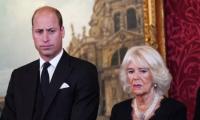LAHORE: The high development budget has provided a cushion to the federal government to allocate significant amounts towards public welfare expenditures, such as Rs240 billion for reducing petroleum levies, and an additional Rs50 billion to support low-income power consumers.
The withdrawal of Rs300 billion from the development budget within two weeks of the announcement of the new budget shows the intent of the government towards development. In fact, economic experts were already sceptic about the allocation of Rs1,450 billion under development. They were sure that this expenditure would be slashed by the end of this fiscal year.
No one expected the government to divert this budget towards people-pleasing concessions. Given the way the government has behaved in the last two weeks, we can expect the further reallocation of development funds for other such measures. This has raised concerns that development expenditures may dwindle to zero by the fiscal year’s end.
The higher allocation for development appears to have been a preplanned strategy to address public demands. The government faced pressure due to high petrol prices, prompting an initial increase in the petroleum levy from Rs60 to Rs80 per litre. Subsequent public protests led to a reduction of Rs10 per litre, resulting in a revenue loss of Rs250 billion annually. This shortfall was compensated by a corresponding cut in the development budget, possibly after consultation with the IMF.
Similarly, concerns over power tariffs for lifeline consumers sparked street protests. The government’s decision to temporarily alleviate these concerns with a Rs50 billion relief package for July to September suggests a calculated approach, perhaps with consultations from the IMF, considering reduced power consumption during colder months from October onwards. This strategic move aims to mitigate immediate consumer grievances, with tariff adjustments expected to resume gradually thereafter.
Consumers will continue to pay high tariffs but low bills due to low consumption. The power bill will start increasing gradually, but the consumers will not be able to protest.It is yet to be seen how the government responds to impressive and intellectual protests by the salaried class, impacted by high taxes. In the case of this class, the government probably is not bothered because white-collar workers are not street agitators. So probably the development fund ‘cushion’ would not be used for the salaried class.
Potential beneficiaries of future development budget reallocations could include traders and exporters. Traders are resisting the FBR’s fixed taxation scheme, while the finance minister remains firm on its implementation. We will have to see actual collection in this regard after six months.
The outcome of these negotiations and subsequent revenue collection trends will likely influence future IMF directives and potential reallocations of development funds to bridge revenue deficits. The same fund could also be used for further subsidizing power tariffs for exporters.
China's President Xi Jinping applauds during the opening ceremony of the Forum on China-Africa Cooperation in...
This photograph shows the logo of US multinational technology conglomerate Meta, taken on May 22, 2022. —...
This is a representational image of a person holding gold chains. — AFP/FileKARACHI: Gold prices decreased by...
An employee working at a textile factory in Pakistan's port city of Karachi, on April 7, 2011. — AFPLAHORE: There is...
People shop at a crowded market ahead of Diwali, the Hindu festival of lights, in the old quarters of Delhi, India on...
Roblox Corp Chief Executive Officer and Co-Founder Dave Baszucki seen in this image. — X/@DavidBaszucki/FileRoblox...







